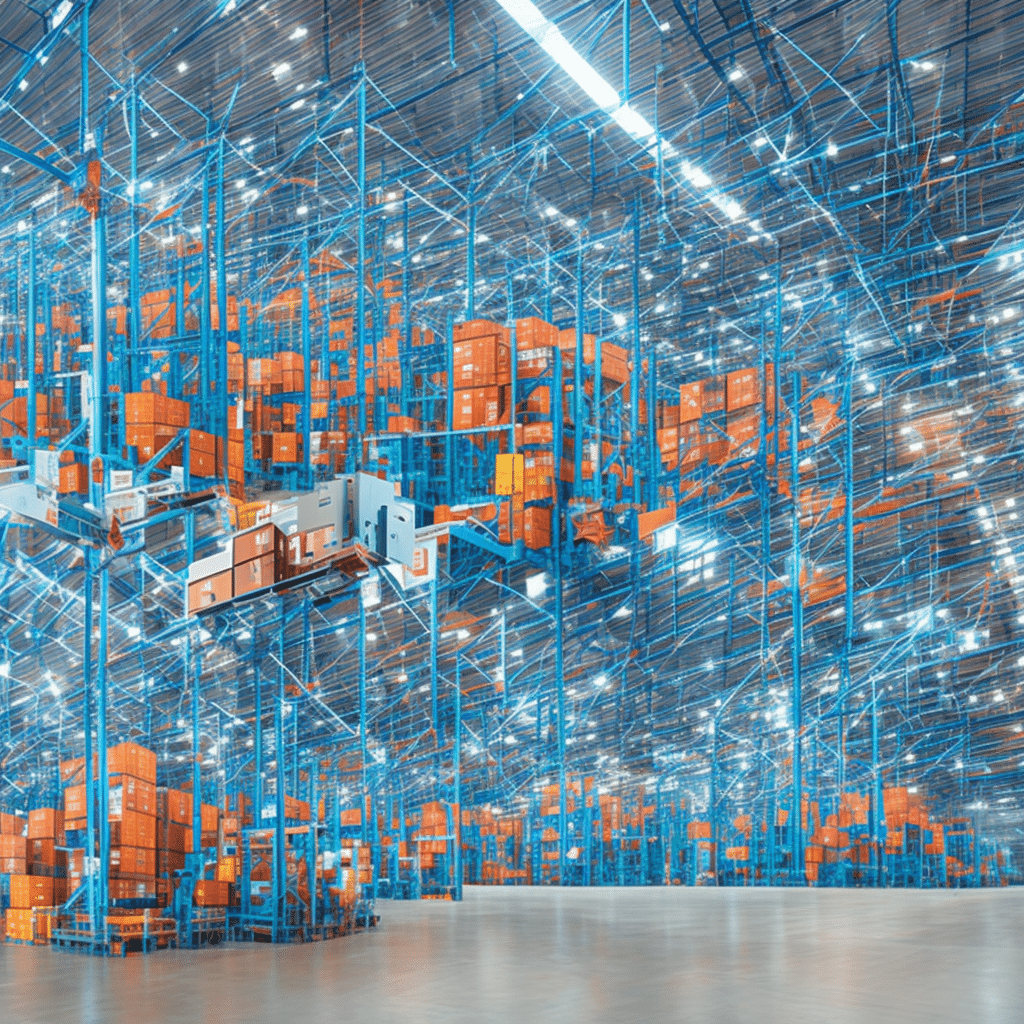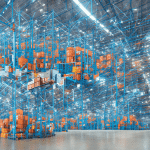The supply chain and logistics industry is complex, involving numerous processes – from procurement and storage to transportation and delivery. With the advent of advanced technologies like artificial intelligence (AI) and the Internet of Things (IoT), companies are exploring their potential to revolutionize these operations. As we delve into this topic, we’ll examine how AI and IoT can streamline supply chain and logistics operations, enhancing efficiency and minimizing operational costs.
The Role of AI in Supply Chain and Logistics
Artificial intelligence is no longer a thing of the future. Its presence is felt in numerous sectors, including supply chain and logistics, where it offers numerous applications.
Avez-vous vu cela : How Is Technology Facilitating Accessible and Inclusive Education for All Learners?
AI-powered solutions can automate routine tasks, foster real-time decision-making, and enhance accuracy in demand forecasting. Furthermore, AI’s capability allows businesses to analyze large sets of data swiftly, providing insights that can enhance operational efficiency.
AI for Demand Forecasting and Inventory Management
Accurate demand forecasting is critical for efficient inventory management. By accurately predicting customer demand, businesses can prevent overstocking or understocking, thereby reducing storage costs and enhancing customer satisfaction.
A lire aussi : What Innovations Are Essential for the Next Generation of Wireless Communication?
AI enables precise demand forecasting by analyzing historical sales data and considering influential factors like market trends, seasonal fluctuations, and promotional events. This level of accuracy is difficult to achieve with traditional methods.
AI in Automating Routine Tasks
AI can simplify routine tasks like data entry, scheduling, and reporting. Robotic Process Automation (RPA), an application of AI, can handle these tasks more efficiently than humans, freeing up staff for more strategic roles.
AI in Decision-Making
AI can significantly improve decision-making in supply chain operations. It allows businesses to simulate different scenarios and predict their outcomes based on historical data. This way, companies can make informed decisions on issues like route optimization, supplier selection, and risk management.
IoT in Enhancing Supply Chain Visibility
The Internet of Things (IoT) involves interconnecting devices and systems over the internet, enabling them to exchange and analyze data. In the context of supply chain and logistics operations, IoT can provide real-time visibility, enhance tracking, and improve quality assurance.
IoT for Real-Time Visibility
IoT devices like GPS trackers, RFID tags, and sensors can provide real-time information on the location and condition of goods throughout the supply chain. This data can help businesses monitor delivery times, manage inventory, and respond quickly to disruptions.
IoT in Enhancing Tracking and Traceability
In an increasingly globalized world, end-to-end traceability is vital for building trust among customers and complying with regulations. IoT devices can track products from manufacture to delivery, providing detailed history and evidence of authenticity.
IoT in Quality Assurance
IoT sensors can monitor environmental conditions like temperature and humidity during transit. This is particularly useful in the food and pharmaceutical sectors, where such conditions can affect product quality. If the conditions exceed stipulated limits, the sensors can send alerts, allowing timely action to prevent damage.
The Combined Power of AI and IoT
While AI and IoT offer substantial benefits individually, their combined power can bring about a transformative change in supply chain and logistics operations.
AI and IoT can work together to create smart supply chains. IoT devices collect and transmit data on various aspects of the supply chain, while AI analyzes this data to provide actionable insights. This synergy allows businesses to monitor operations in real-time, predict and prevent disruptions, and make data-driven decisions that enhance efficiency and cost-effectiveness.
Overcoming Challenges in AI and IoT Adoption
Despite the benefits, adoption of AI and IoT in supply chain and logistics operations faces several hurdles, including data security concerns, lack of trained personnel, and high implementation costs.
However, businesses can overcome these challenges with a systematic approach. For instance, they can invest in cybersecurity measures, provide necessary training to employees, and explore flexible financing options. Moreover, it’s crucial to pilot the technologies before full-scale implementation to understand their impact and ROI.
In conclusion, AI and IoT hold immense potential to streamline supply chain and logistics operations. By embracing these technologies, businesses can stay a step ahead in the competitive market.
Predictive Analytics and Machine Learning in Supply Chain Management
Predictive analytics and machine learning, both subsets of AI, offer tremendous possibilities in supply chain management. These technologies can analyze vast amounts of data to predict future trends, making them invaluable tools for demand forecasting and inventory management.
Predictive analytics involves analyzing historical and current data to predict future outcomes. In supply chain operations, businesses can utilize predictive analytics to forecast customer demand accurately, thereby maintaining optimal inventory levels. This not only minimizes storage costs but also ensures timely delivery of products, enhancing customer satisfaction.
Machine learning, on the other hand, refers to AI systems’ ability to learn and improve from experience without being explicitly programmed. In supply chain management, machine learning algorithms can continuously learn from historical data to improve their forecasting accuracy over time. This allows businesses to respond effectively to sudden changes in demand or supply.
Furthermore, machine learning can automate complex decision-making processes. For example, it can analyze numerous factors to determine the best routes for transportation, thereby reducing delivery times and fuel costs. It can also assist in supplier selection by assessing factors like cost, quality, and reliability.
Data Analytics and IoT in Supply Chain Logistics
In the realm of supply chain logistics, data analytics and IoT offer the promise of real-time visibility, traceability, and quality assurance.
Data analytics refers to the process of examining, cleaning, and transforming data to discover useful information, draw conclusions, and support decision-making. In the logistics industry, data analytics can analyze data from various sources – such as GPS trackers, RFID tags, and sensors – to provide valuable insights. These insights can help businesses monitor delivery times, manage inventory, and respond swiftly to disruptions.
IoT logistics solutions can provide real-time information on the location and condition of goods throughout the supply chain. This not only enhances tracking and traceability but also improves quality assurance. IoT sensors can monitor environmental conditions during transit and send alerts if the conditions exceed stipulated limits. This allows businesses to take prompt action to prevent damage and ensure product quality.
Moreover, data from IoT devices can feed into AI systems for further analysis, creating a feedback loop that continually enhances operational efficiency. This synergy between data analytics, IoT, and AI is what makes smart supply chains possible.
Conclusion
The integration of AI and IoT can significantly streamline supply chain and logistics operations. By leveraging predictive analytics, machine learning, and data analytics, businesses can accurately forecast demand, optimize inventory management, make informed decisions, and enhance real-time visibility and traceability.
While adoption of these technologies comes with challenges like data security concerns and high implementation costs, businesses can mitigate these risks with careful planning and a systematic approach.
In the competitive landscape of the 21st century, the companies that harness the power of AI and IoT will likely lead the pack. Investing in these technologies is no longer optional but rather a strategic imperative for businesses aiming to stay ahead in the game.










